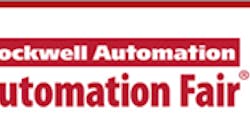PEMEX trusts Rockwell Automation for terminal solutions
The 77 fuel storage and distribution terminals of Petroleos Mexicanos are the main distribution points for fuel, petroleum and petroleum product to all of Mexico, as well as for import and export.
They are located in areas from maritime to desert, subject to extremes of temperature, salt corrosion and even flooding. They’re charged with satisfying all the country’s demands for storage, shipment and distribution, to all authorized customers, without risk of incidents.
To this end, each of these PEMEX facilities must be equipped with integral fire control systems (safety systems, or SICCI in Spanish) as well as a measurement control operation system (process control system, or SIMCOT).
In 2005, a series of projects was started to install SICCI and SIMCOT systems in 22 of the terminals (called TARs). By 2012, an additional 7 TARs were equipped, and in 2014, work started to implement systems in the remaining 46 TARs by the end of 2017.
Performance criteria
The first step was to select appropriate systems.
“It took some time to decide how to choose the SICCI system,” said Moises García Hernández, general manager, automation, SCAP, a system integrator working with PEMEX on the project.
“We had 20 years of operation with failures only due to short circuits or lightning.” Moises García Hernández said that the PEMEX decision to standardize on Rockwell Automation technology for its terminal automation systems weighed heavily on the company’s past experience.
Hernández presented the project to attendees of a session entitled “PEMEX Standardizes on Rockwell Automation Technology for Terminal Automation,” at the Rockwell Automation Process Solutions User Group meeting (PSUG) this week in Chicago.
The main objective of the SICCI is to ensure that operational activities in the TARs are made within normal operational parameters, as well as to monitor, alert and respond to any contingency (fire or spill) appropriately. The system decision rested on four criteria:
1. Reliability and availability (SIL 3)
2. Suitability for environmental conditions: cold, hot, maritime, etc.
3. Proven ruggedness, i.e. flooding, lightning
4. Local technical support 24/7 in Spanish
The SIMCOT system criteria included:
1. Open and well-known technology for both operations and maintenance
2. Technical support through both system integrators and the supplier
3. High availability for spare parts: 1-2 days
4. Established low failure rates
Experience with their existing systems led PEMEX engineers to standardize on Rockwell Automation technology, including the company’s Trusted controller for SICCI and ControlLogix control system for SIMCOT systems.
The SICCI interfaces with SIMCOT via fiber optic Ethernet. The systems are integrated with third-party equipment from suppliers including Oasys, FMC, Endress+Hauser and Rotork. The decision was influenced by experience with existing Rockwell Automation systems.
“In one case, we had a failure of the cooling system on an SICCI cabinet due to a partial loss of power. The cabinet overheated and the system eventually tripped off. Some of the plastic deflected because of excess heat but when we cooled it down and turned it back on, it was fine.”
When a SIMCOT system was struck by lightning, technicians expected total destruction, but only one card failed.
“We had 20 years of operation with failures only due to short circuits or lightning,” Hernández said. “All we had to do was test every year to be sure the program was still the same as a year ago.”
New systems help meet growing demand
The first block of 15 SICCI systems is on track for completion in March, 2016. “Standardization is providing important benefits in inventory and personnel training,” reported Hernández. “We are training at seven terminals now, and because we have the same technology in other terminals, those will be easier.”
The system will also add a standardized plan for response to emergency calls developed by PEMEX and Rockwell Automation. Standardized technology is expected to provide more efficient response to fires or spills through automated mitigation systems.
The first 15 new SIMCOT systems are also expected to be running by March, ensuring controlled access to the plant as well as efficient product measurement to detect “shrinkage” through unauthorized product diversion. These systems will send and receive information to a centralized management system.
Standardizing its control and safety technology will help PEMEX meet rising fuel demands from all over the country, and meet regulations and standards.
“Our systems were old, and newer standards were not being met,” said Hernández. “Now they will be.”
The new systems also will help PEMEX streamline TAR operation to reduce costs. This is increasingly important, as Mexico is opening its petroleum market to independent and outside companies.







